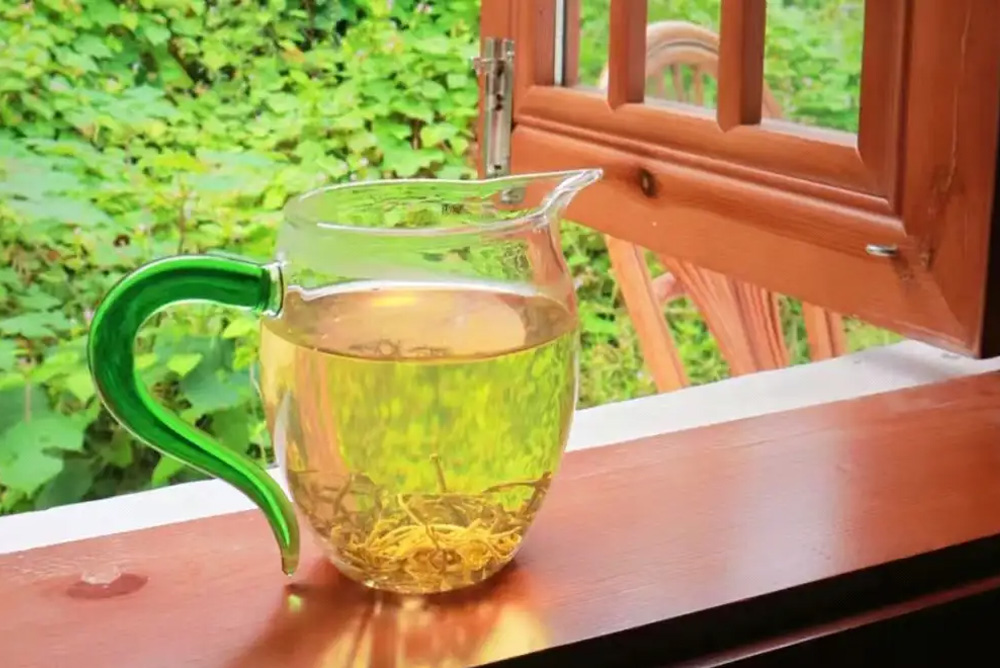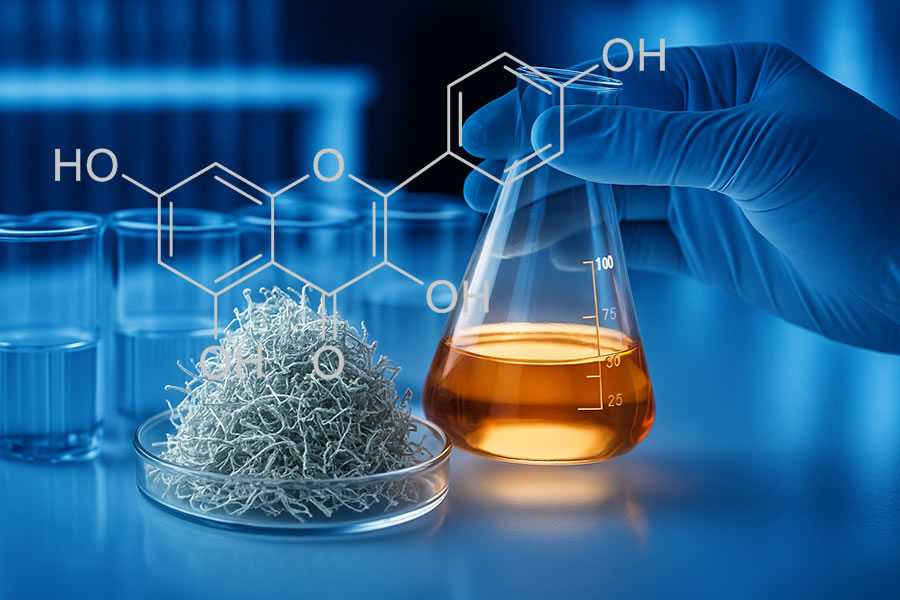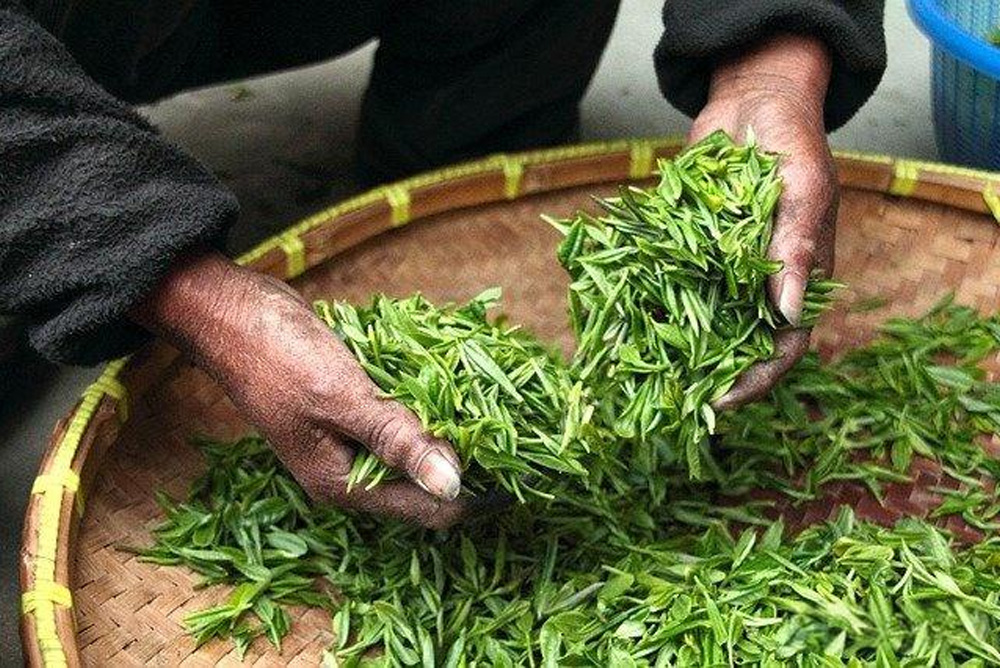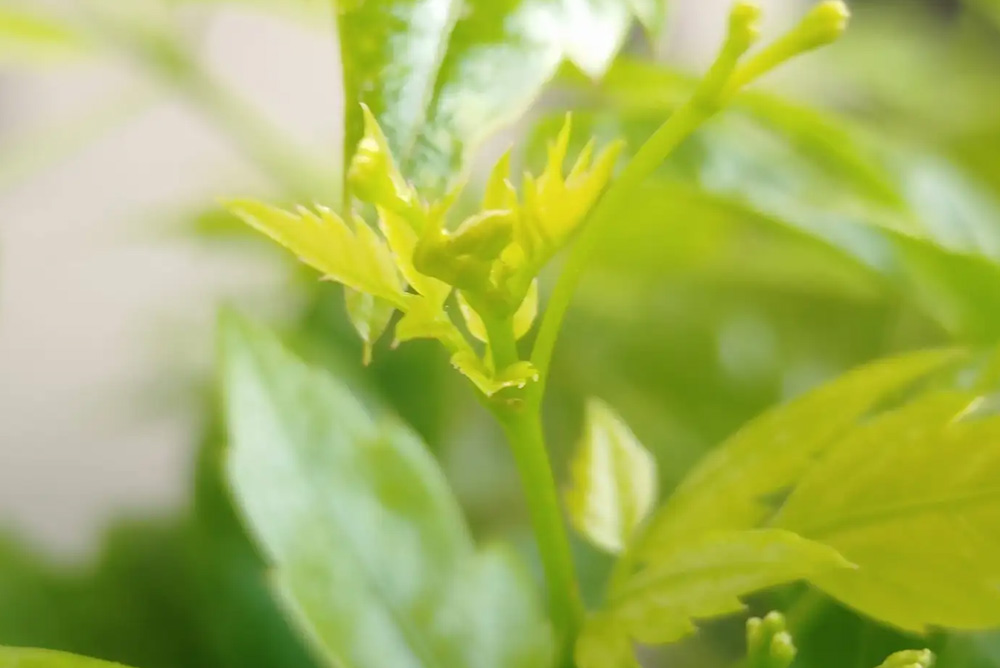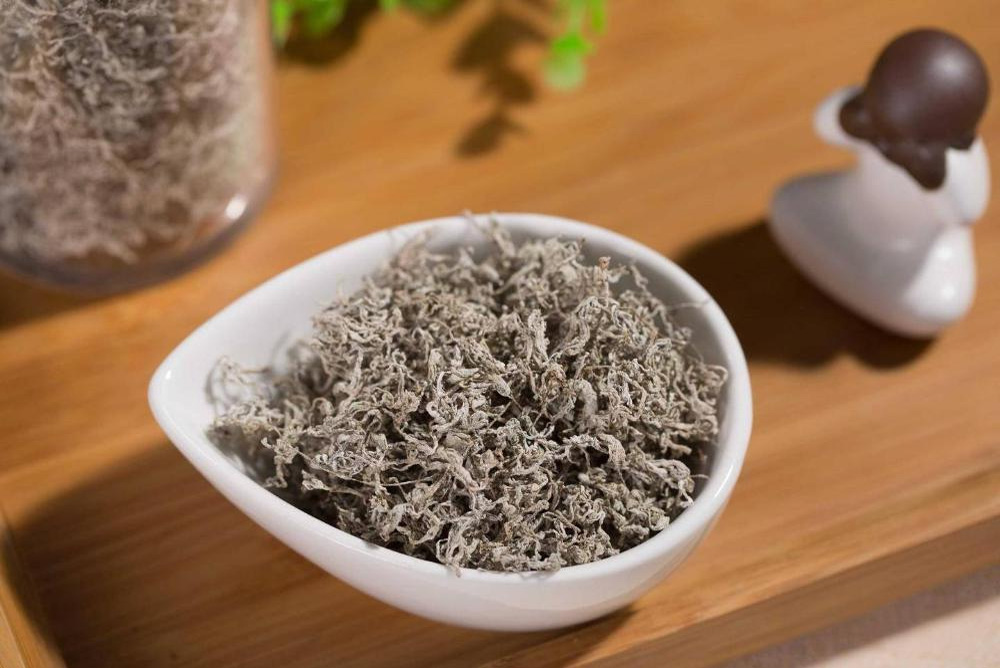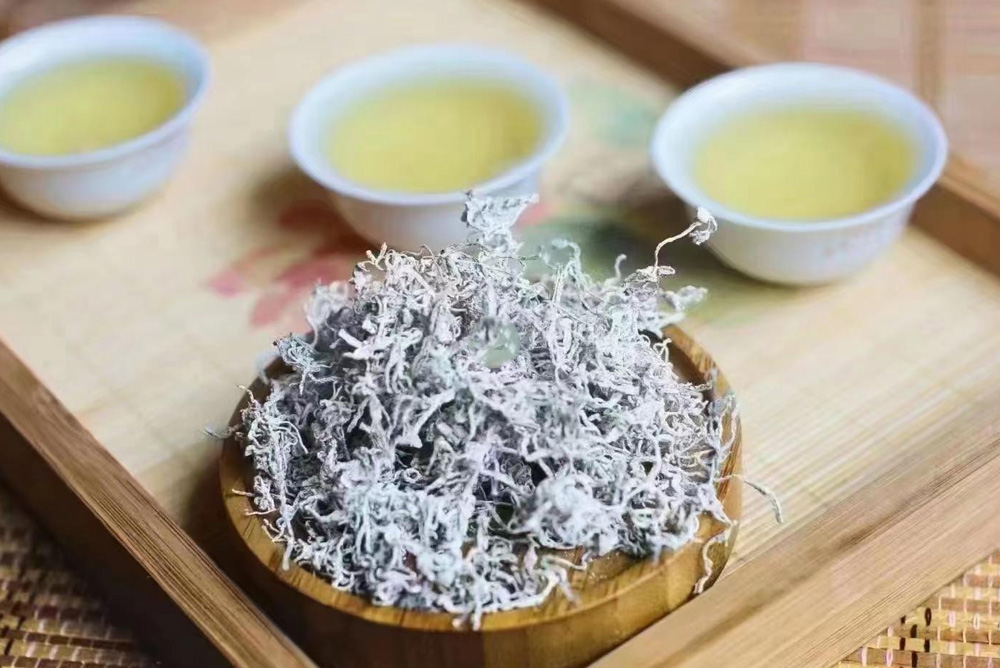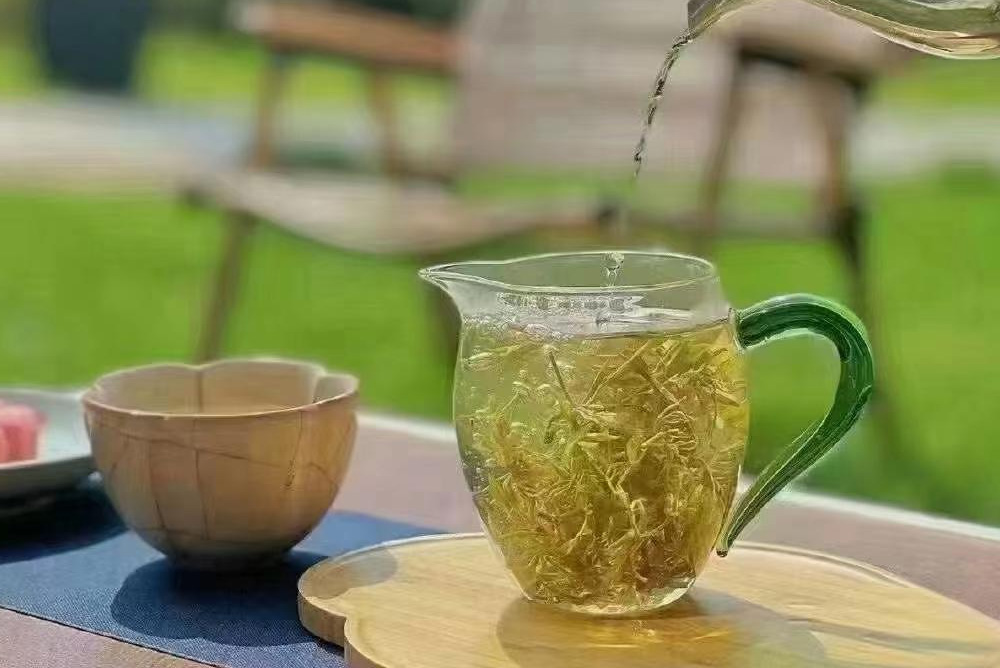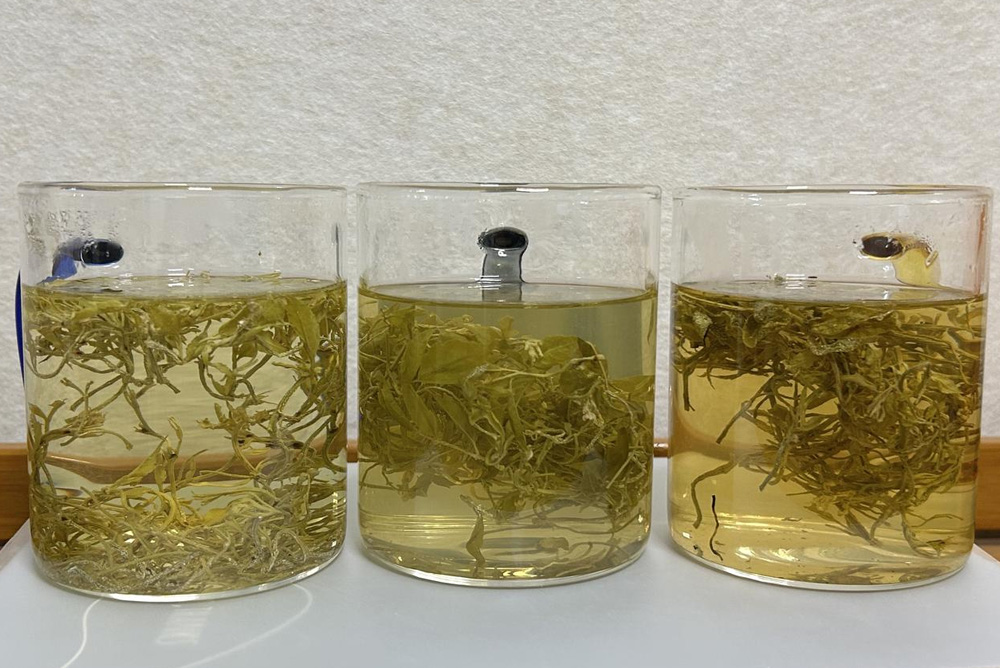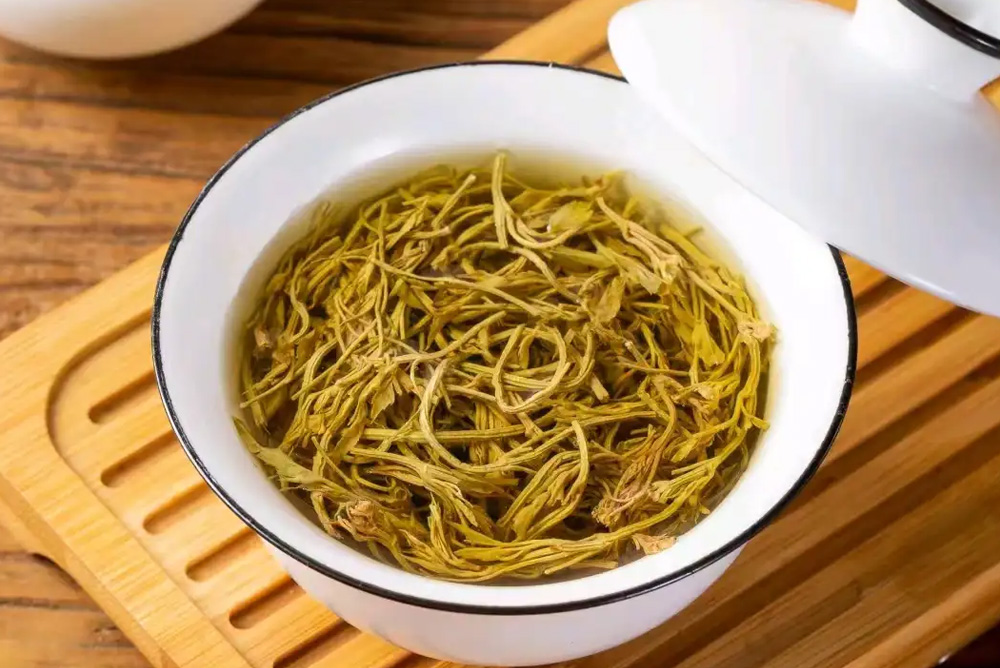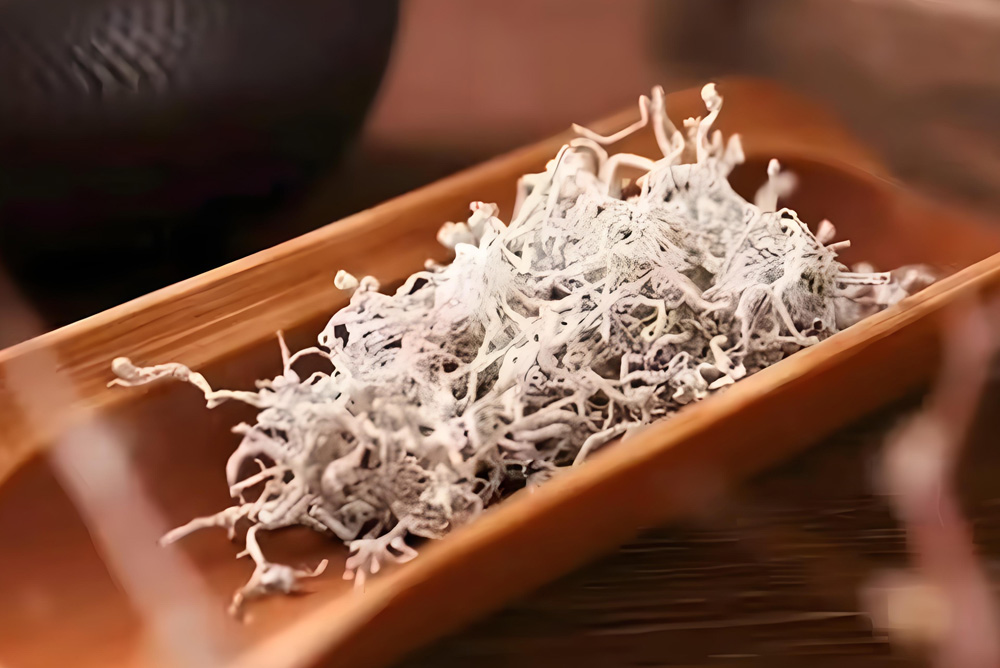Many tea lovers enjoy the refreshing taste of vine tea (Ampelopsis grossedentata), but sometimes notice the tea soup turning red after brewing. This often raises a question: Is the tea still safe to drink?
With the right brewing method, vine tea usually produces a clear, bright golden-yellow infusion. However, under certain conditions, the tea color may shift to a reddish tone. Let’s explore why this happens and whether it affects quality.
1. The Correct Way to Brew Vine Tea
To get the best taste and benefits:
-
Use 2–3 grams of vine tea.
-
Brew directly with 300–400 ml of water at 95°C or higher.
-
Do not rinse the tea. The white frost on the leaves is flavonoid crystals — the main source of vine tea’s health benefits.
-
Note: about 70% of active compounds dissolve in the first brew, and up to 90% by the second brew. Vine tea is not highly re-steepable — 2 to 3 infusions are usually enough.
A good cup should taste slightly bitter at first, followed by a long-lasting sweet aftertaste.
2. Why Vine Tea Turns Red
A reddish tea soup can result from several harmless reasons:
-
Overnight tea: Prolonged steeping releases more flavonoids, deepening the color.
-
Thermos brewing or long boiling: Extended closed brewing causes compounds to oxidize.
-
Too much tea: A high leaf-to-water ratio darkens the brew.
-
Older leaves in the batch: Mature leaves brew darker.
-
Water quality issues: Tap water or high-mineral water may react with the tea, altering its color.
In these cases, the tea is still safe to drink, although flavor may be stronger or slightly different.
3. When Not to Drink Red Vine Tea
Sometimes a red or dark brew can signal poor quality or storage issues. Avoid drinking if:
-
The tea liquor is too black, pale, or cloudy with floating impurities.
-
White particles appear in the liquid.
-
The taste is excessively bitter or lacks sweetness.
-
The dried leaves show mold or spoilage signs.
In such cases, the tea has likely lost its freshness and may no longer be safe.
Enjoy Premium Bud Tip Vine Tea with JINQI
A slight red color in vine tea (Ampelopsis grossedentata) is usually natural and safe, but extreme changes can indicate quality issues. By following proper brewing methods and observing tea soup color, you can enjoy both the flavor and health benefits of vine tea with confidence.
At JINQI Vine Tea Co., Ltd., we ensure every batch of vine tea is grown in Laifeng County, processed under GMP standards, and tested for purity — so you always enjoy authentic, safe, and nutrient-rich vine tea.
FAQs
Q1: Why does vine tea turn red when brewed?
It can happen due to long steeping, high tea-to-water ratio, or water quality — usually safe to drink.
Q2: Is red-colored vine tea harmful?
Not usually. If the tea tastes normal and is clear, it’s safe. Avoid if cloudy, moldy, or bitter.
Q3: What color should vine tea normally be?
Properly brewed vine tea should be bright golden-yellow, clear, and refreshing.

